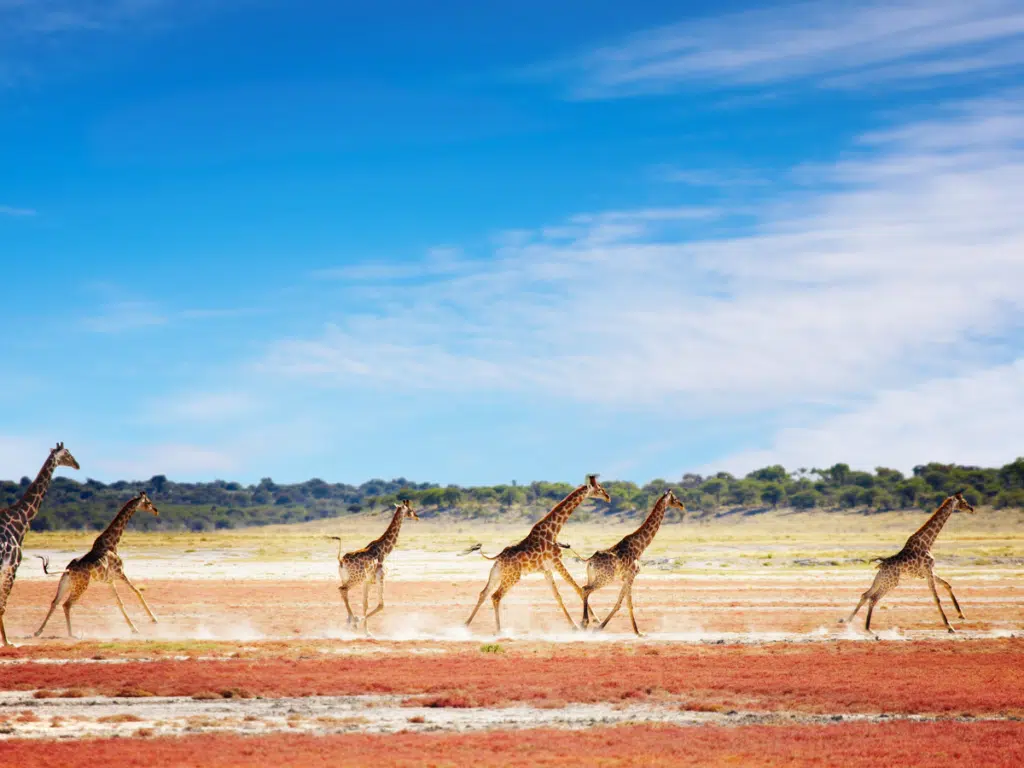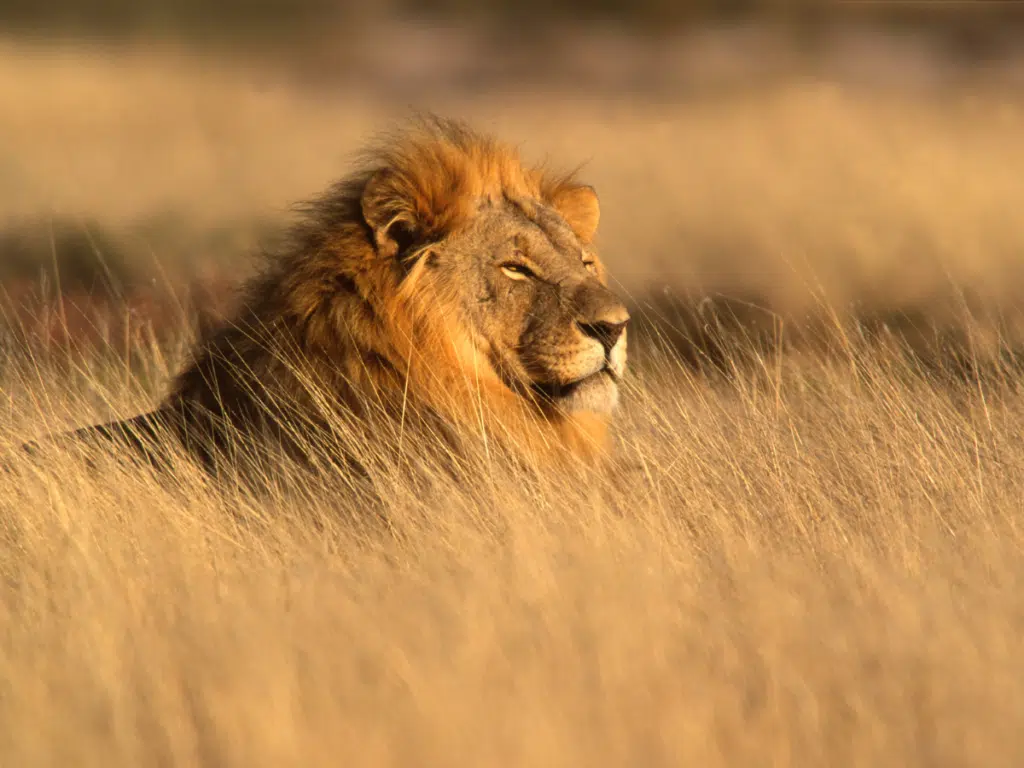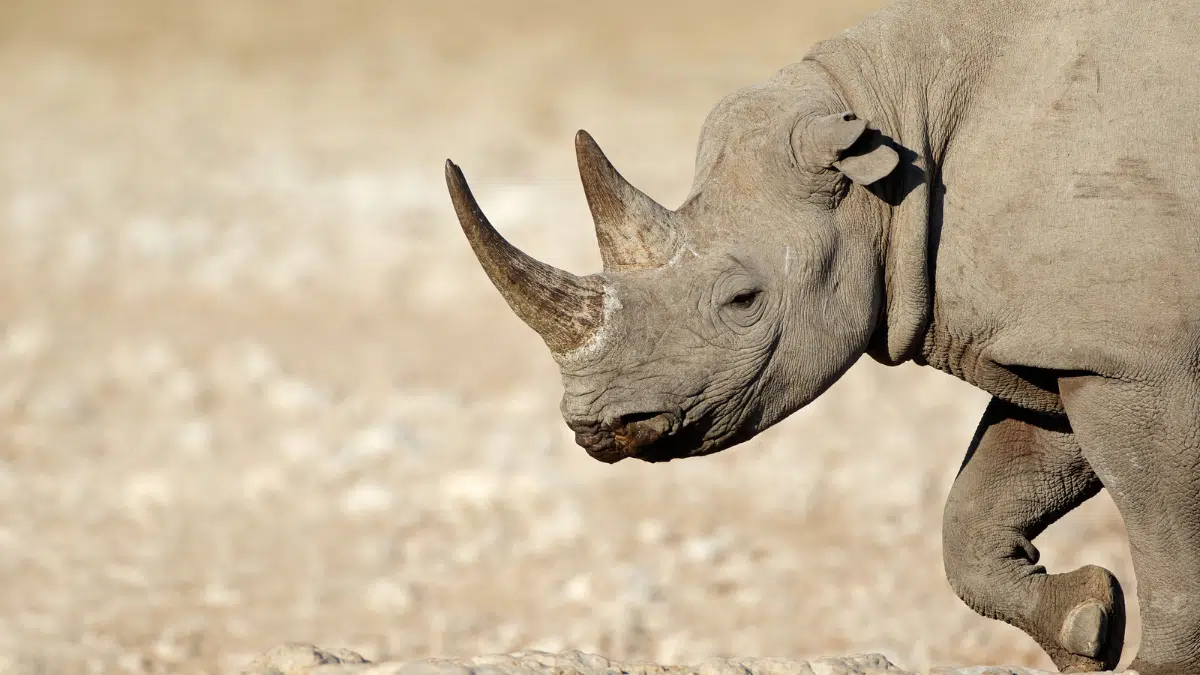A Guide to Etosha National Park Wildlife
Etosha National Park wildlife is more varied and exciting than any other game reserve in Northern Namibia. Dry winters and multiple watering holes combine to encourage a wealth of different species to cohabit this spectacular natural environment.
Although you will only find 4 of the Big 5 in Etosha National Park, the 4 that are here make up for the missing Cape buffalo. You should expect to see leopards and lions while game viewing, and elephants that are some of the biggest in Africa.
Regularly spotted are rare black rhinos; they tend to roam near the floodlit waterholes of Halali and Okaukuejo. A dozen white rhinos were introduced some years ago, with the best chance of viewing them being in the east of Etosha.
In total, there are 114 species of mammal and 340 species of bird in Etosha. Around a third of those birds are migratory and travel down from the north to inhabit the Etosha Pan during the rainy season. This is when the grasses and seeds are lush, food is plentiful and the watering holes are full.

This post contains affiliate links that may reward me monetarily or otherwise when you use them to make qualifying purchases – at no cost to you. As an Amazon Associate, I earn from qualifying purchases. For more information, please read our disclosure policy.
Etosha National Park Wildlife – Large Mammals
If you have never been on a game reserve, prepare to have your mind blown. It is like walking into a National Geographic magazine. You will have a wide variety of animal sightings on an Etosha safari. These include the popular zebra, giraffe, rhino, common antelope, and elephants all relaxing around water holes.
Often, you might spot a mass of brown in the distance and not realize until you get closer that it is a gathering of blue wildebeest. Not just hundreds, but thousands of them, all flocking together as one huge community.
Big Cats of Etosha
Leopards
Look closely and you might spot a leopard. They are mostly nocturnal and even if you catch sight of them during daylight hours, they are shy and will seek cover if they spot you.
For this reason, you should always have your camera at the ready. They will lie in wait for their prey of small mammals and antelope, and launch a surprise attack.
Cheetahs
The fastest land mammal in the world, cheetahs only need a short distance to reach 70 mph speeds. Again, be braced with your camera ready to get a shot. Cheetahs are the most common of the big cats that roam Etosha National Park and feast on springboks.
Lions
Who doesn’t want to see a lion in its spectacular natural habitat? They’re usually found close to watering spots. After all, so many animals congregating together is a very varied menu to the lion – they enjoy zebra and wildebeest.
Lions live in family groups, so if you spot one, there will be a family close by. Luckier still, imagine spotting some cubs playing together in the shade who will put on an awesome show for you.

Other Large Mammals Found in Etosha
Rhinos
Both white rhinos and black rhinos can be found in Etosha. Rhino populations do not get released by the park due to the ongoing poaching problem, and sighting locations are not made public.
However, the country of Namibia hosts more than a third of Africa’s black rhinos. The conservation of this incredible member of the Big 5 is an extremely important issue here! Namibia’s Save the Rhino Trust is instrumental in these efforts.
Elephants
Elephants travel in large herds and are regularly spotted in the park. They might not be as big-tusked as you would expect, though. They rely on their tusks to dig down on the hunt for water during the dry season.
There are more than 2,500 elephants living in Etosha, and they are one of the more reliable sightings in the park. Even during the heat of the day, when much of Etosha’s wildlife is resting, elephants can be seen at the waterholes.
Watching them drinking and bathing in groups at the park’s waterholes is an amazing way to spend an afternoon. Herds can be up to 20 animals strong, and often include babies of all ages.
There are no animals that are more fun to watch, especially in the water!
Other big mammals that are common in Etosha National Park, include giraffes, mountain and plains zebra, antelope, springbok, gemsbok, eland, hyena, and kudu.
Smaller Mammals Found in Etosha
There are many species of small mammals in Etosha National Park. Wildlife including warthogs, honey badgers, jackals, bat-eared foxes, and ground squirrels are but a few.
The black-faced impala is rare, there are only around 1000 of the animals in the park. Dik-diks are a relatively common sight. They are the smallest of the antelope family and are found in areas where the bush is dense.
Birds of Etosha
With more than 340 different breeds of birds, over 200 of which are resident year-round, Etosha is a bird-watcher’s paradise. Species that are often considered garden birds, such as sparrows, thrushes, and tits are plentiful.
Even impressive ostriches, flamingos, and storks make their home in this region of Namibia. Larger birds of prey such as sparrow hawks, eagles, harrier hawks, and vultures are often seen hovering over prey. As well, eagle and barn owls might be spotted at dusk.
Many birds head south into Etosha during the rainy season, on the hunt for more readily available food around the waterholes.
One of these is the flamingo. In the summer, when the rains come and Etosha Pan fills with water, pink clouds of flamingos descend on its surface. This is one of the most impressive sights in the park this time of year.
In especially wet years, over a million lesser and greater flamingos have been counted in the park. Not only is it a spectacular sight to see, it’s also one of the only breeding grounds for these birds in all of Southern Africa.
Be on the lookout, too, for Namibia’s national bird, the African fish eagle. These iconic birds like to roost near water, so you might be able to see them hunting Etosh’s only fish, the sharptooth catfish.
African fish eagles are territorial birds – if you’re lucky, you might get to see a classic battle over hunting grounds. Two birds will clasp feet and cartwheel toward the surface of the water. They will only separate just before they splash into the water.

Practical Tips for Visiting Etosha
• To get from Windhoek to the park, head north on highway C38 for approximately 4 hours. Remember that the park gates close 15 minutes before sunset, so time your arrival accordingly.
• Driving slowly between camps or accommodations looking for wildlife to photograph is a wonderful way to spend a day. The speed limit in the Park is 60 km/hr, but wildlife viewing is better at closer to 30 km/hr.
• You can only drive in the park between sunrise and sunset, but the times change weekly. I would suggest that you check Etosha’s website to stay up to date.
• The best time to see most animals is early in the morning and in the late afternoon, when it’s cooler. Try to be at your camp gate as soon as it opens in the morning!
• Alway leave the park the way you found it. Do not litter, and never remove plants or cuttings from the park.
• You must stay inside your vehicle at all times while in the park, except for rest stops. No short pee breaks on the side of the road, not that you would want to. Who knows what’s hiding in the bushes! Toilets and rest stops are available throughout the park.
• Never, ever feed the animals. It’s dangerous for you, and habituates the animals to humans, which is dangerous for anyone else who comes in contact with them.
• According to park rules, wildlife viewing at waterholes requires silence. Keep voices quiet and radio volumes low at all times.
• If you’re serious about photographing the wildlife, ensure that you have a camera with a good zoom. I suggest two cameras, one with a zoom and the other with a wide angle and keep both ready and close by.
Did anyone say ‘Elephant crossing’?!
Wildlife in Etosha National Park
Etosha National Park wildlife is extensive! We haven’t even scratched the surface with the animals that we have mentioned. There are also 110 reptile species, 16 types of amphibian, there is even 1 species of fish!
Remember to take your time around the park, drive slow, and be observant. Grab a map from the tourist information shop at Okaukuejo to help you to recognize some of the more unusual animals. You can also use it as a checklist to keep count of just how many of the hundreds of species you manage to spot.
Explore Etosha National Park wildlife for the experience of a lifetime!

Carley Rojas Avila is a bilingual New York-based travel writer, editor, content marketer, and the founder of the digital travel publications Explorers Away and Home to Havana. Carley is an expert on all things Latin America, the Caribbean, and Cuba, having lived and worked in four different countries in the region. Her writing has appeared on the Associated Press wires and in Travel + Leisure, Yahoo, MSN, Euronews, The Weather Channel, and more. When she's not writing about her travels, find her front row at a Bad Bunny concert, befriending street cats, and taste-testing every pizza in Havana.

